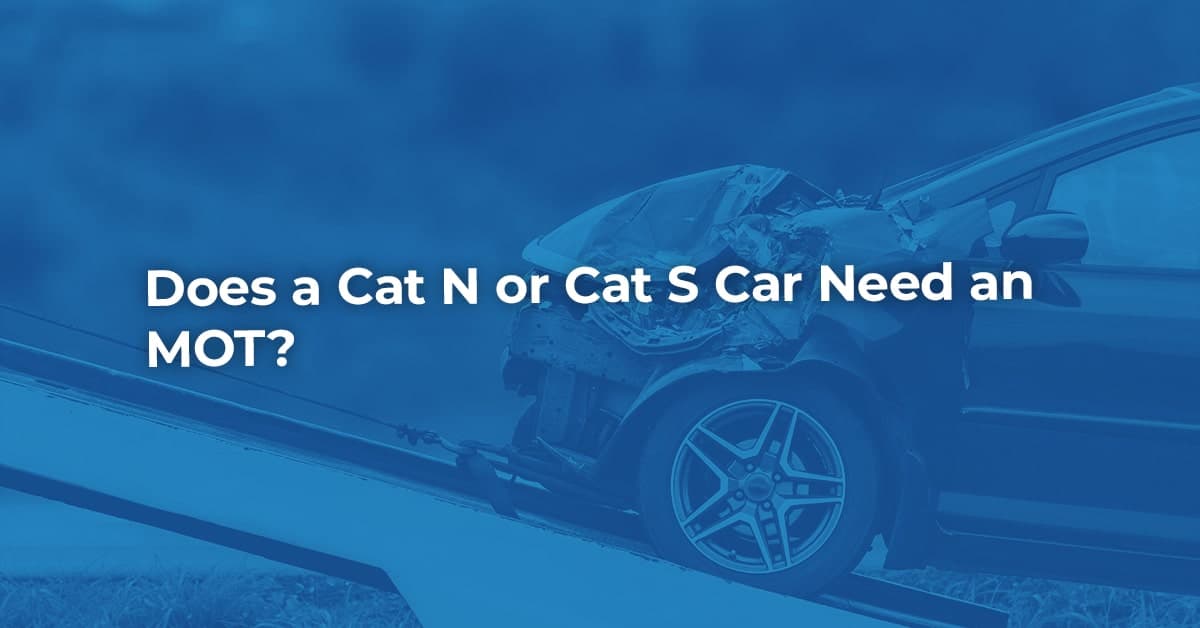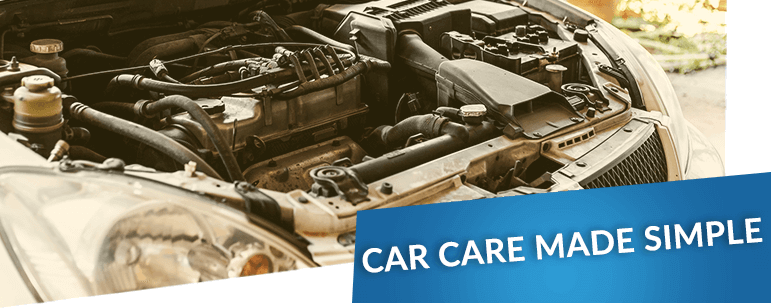When it comes to buying a used car, you may have come across the insurance terms Category N and Category S.
These are assigned to vehicles when the cost of a repair would likely exceed the car’s total value.
Cat S cars have suffered structural damage, so must sit a new MOT inspection before they can be declared road legal after necessary repairs.
Cat N cars have been written off due to non-structural damage, so don't need a new MOT before you can drive them again.
Read on to learn more about why Category N and S cars don't both need new MOTs, if you can drive them once they have been written off and more.
Page Contents
- Will a Cat N or Cat S Car Need a New MOT?
- What Is a Cat N Car?
- What Is a Cat S Car?
- Can a Cat N Car Be Returned to the Road?
- Can a Cat S Car Be Returned to the Road?
- Are Cat N Cars Expensive to Insure?
- Are Cat S Cars Expensive to Insure?
- Should I Buy a Category N or Category S Vehicle?
- What Are the Pros and Cons of Buying a Cat N or Cat S Car?
- Can I Sell a Cat N or Cat S Car?
Will a Cat N or Cat S Car Need a New MOT?
Cat N
As Cat N vehicles have only suffered non-structural damage, the DVLA will not require that the vehicle has a new MOT before it is next driven on the road.
Just remember to book an MOT test for the vehicle ahead of the current MOT certificate expiry date, and make sure that you notify your insurer of the vehicle’s new classification.
Make sure that you have any repairs carried out ahead of the MOT test to ensure that the vehicle is roadworthy, too.
Cat S
Once your Cat S car is repaired and re-registered, the vehicle will need an MOT, and you will need to pay road tax and insurance on it before you can drive it.
Having your Cat S car independently inspected and MOT tested at a garage separate to the dealer selling it can give you peace of mind that your vehicle is safe to drive.
What Is a Cat N Car?
A Category N write-off is a salvage car, which an insurance company has decided is not worthy of repair as a result of the non-structural damage it has experienced.
If the cost of repairs would have exceeded the car’s total value, then the insurer may decide to write the car off.
A Cat N vehicle can refer to a vehicle which has suffered a severe mechanical fault, or even subtle cosmetic damage.
The damage caused to a Category N car will usually have occurred during an accident, but this will not have impacted the chassis of the vehicle.
The brakes, steering or electrics may have been affected.
You can choose to have the car repaired and use it again in future, so long as the repairs carried out on the Cat N vehicle make it roadworthy.
What Is a Cat S Car?
A Cat S car will have experienced structural damage, perhaps to the chassis or crumple zones during a crash.
Vehicles in this category will have been written off by the insurer for being uneconomical to repair.
The damage caused to Cat S cars is more than cosmetic, meaning Cat S cars need to be professionally repaired and won't be safe to drive until they are.
Can a Cat N Car Be Returned to the Road?
A Cat N car can be returned to the road, provided it has been repaired to a safe and appropriate standard.
Car N cars don't need to be re-registered, but the Driver and Vehicle Licensing Agency (DVLA) must be notified of the vehicle's Cat N status before it is used on a public road.
Can a Cat S Car Be Returned to the Road?
Cat S vehicles can be driven after all repairs have been carried out by a professional garage or body shop, and the vehicle has been deemed safe to drive.
A Cat S vehicle will then need to be re-registered with the DVLA before it is back on the road.
Are Cat N Cars Expensive to Insure?
Cat N cars can be expensive to insure, with some insurers refusing to cover Cat N vehicles at all.
Some insurance companies will ask that the car be checked by an expert and that a report on the vehicle's mechanical condition be provided.
Are Cat S Cars Expensive to Insure?
As the previous and current conditions of Cat S cars aren't certain, Cat S cars can be more costly to insure.
This is because it can be difficult to determine the market value of a repaired car.
Insurers base their quotes on risk, with Cat S cars posing greater risks than cars that are guaranteed to be structurally sound.
Cat S cars will likely be cheaper to buy than most used cars, as they are viewed as high risk as they have been damaged and then repaired.
Should I Buy a Category N or Category S Vehicle?
If you are planning on buying a Cat N or Cat S car, you should ask the following questions:
- Is the car properly repaired?
- Have you been provided with documentary evidence of the repairs?
- Have you had a third-party inspection done?
- How much will the car cost to insure?
You can drive a Cat N or Cat S car, provided that the vehicle has had the necessary repairs and has been classed as roadworthy - which you should always check before buying.
You should find out if the Car S or Cat N car’s faults are likely to reappear in future, and how much these issues will cost to fix.
Sellers may attempt to sell Category S or Category N cars as non-damaged, meaning you may pay more than necessary if you do not do your research before buying a used car.
What Are the Pros and Cons of Buying a Cat N or Cat S Car?
Buying a Cat N or Cat S vehicle comes with a lot of pros and cons to consider.
Whilst there is the possibility of big savings, the cons include lower resale value, higher insurance costs and the possibility. of an invalid warranty.
One of the biggest advantages to buying a Cat N or Cat S car is you could save yourself some money - provided the vehicle has been repaired to a high standard by a professional firm.
A Cat S or Cat N vehicle will always have this label.
Buyers can see this if they carry out a HPI check or investigate the vehicle's past, meaning the car will have a lower resale value than one that has never been involved in an accident.
A car that has been damaged and repaired will likely cost more to insure, so you should always get an insurance quote before making any decisions.
The warranty on a written off car is likely to be void due to the damage it has sustained, meaning you could be responsible for covering the costs.
You should always carry out a third-party investigation before you commit to the purchase.
Given that the car may not have been repaired to a high standard, this is an essential step if you are planning to buy a Cat N or Cat S car.
Can I Sell a Cat N or Cat S Car?
It is legal to sell a Cat N or Cat S vehicle, provided its status is declared.
If you are a dealer, this declaration must be clear, even if the car has been repaired to its pre-accident condition.
If you are a private seller, you must declare the Cat status if you are asked about it.
For this reason, it is best to make the status clear in any case.
Bear in mind that some drivers may be hesitant to buy a Cat S or Cat N vehicle if you decide to sell.
A car with a write-off marker is worth far less than one with a clean history, regardless of the extent of the damage and the quality of the repair work.
Many buyers will steer clear of buying a vehicle that has a history of damage altogether.
If your vehicle needs a repair, you can browse garages to find the best one local to you.








No comments yet
Leave a comment